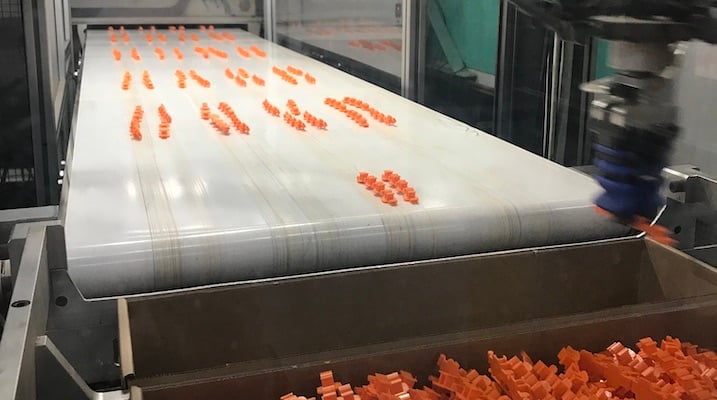
Contract manufacturing breeds innovation, but without the right experience to guide process engineering, it can be difficult to break out of established patterns. In this article we will compare the automated processes applied to two similar-yet-different products. While these items perform nearly identical functions, each has its own distinct assembly and packaging requirements. While many contract manufacturers would simply produce the parts simultaneously and add manual operations to each line, the team at Micron uncovered unique opportunities to increase efficiency and ROI by approaching each item as a unique part.
Many manufacturers may not take the time to fully evaluate the different options available for automation, accounting for part of the 48% of manufacturing processes executed manually. It is expected that within a decade, that number will drop to 35%. Companies that add automation into their digital transformation strategy will succeed, while businesses that eschew this approach will lose ground.
A Comparison of Automated Manufacturing Processes
Imagine two manufacturing processes that create upholstery clips for automotive seats, Clip A and Clip B. In both cases, the part is demolded, dumped onto a conveyor, quality checked, and packaged. At one time, Clip B was produced as individual pieces in the same manner as Clip A, then shipped to car seat factories where operators would snap them together manually and apply foam. By approaching Clip A and Clip B separately, this step could be incorporated into the manufacturing process, reducing the amount of manual labor and time required when the clips were put into use.
Automated assembly processes were developed that would connect the clips after molding. Clip A is then deposited onto a conveyor in connected strips. Each subassembly is located by cameras and retrieved by a six-axis robotic arm with soft tooling that picks up and manipulates the position of the part. The parts are then placed into specialty boxes and weighed to ensure the proper number of parts per box. For Clip B, the parts are molded and sent down a conveyor into a bin, where they are hand-counted and packaged into boxes manually.
When is Automation the Right Choice?
Automation can be more expensive if it is implemented before the process is stabilized, but once a process is established, automation becomes an excellent option for cost efficiency. By undertaking quality control measures during the automation process, a solid ROI can be achieved more quickly.
Micron Solutions can determine the best course of action for automation to maximize your productivity and ROI. Our experience with automation processes ensures the highest quality standards will be applied to your design and maximum ROI achieved for your company. Contact us today to get started.


